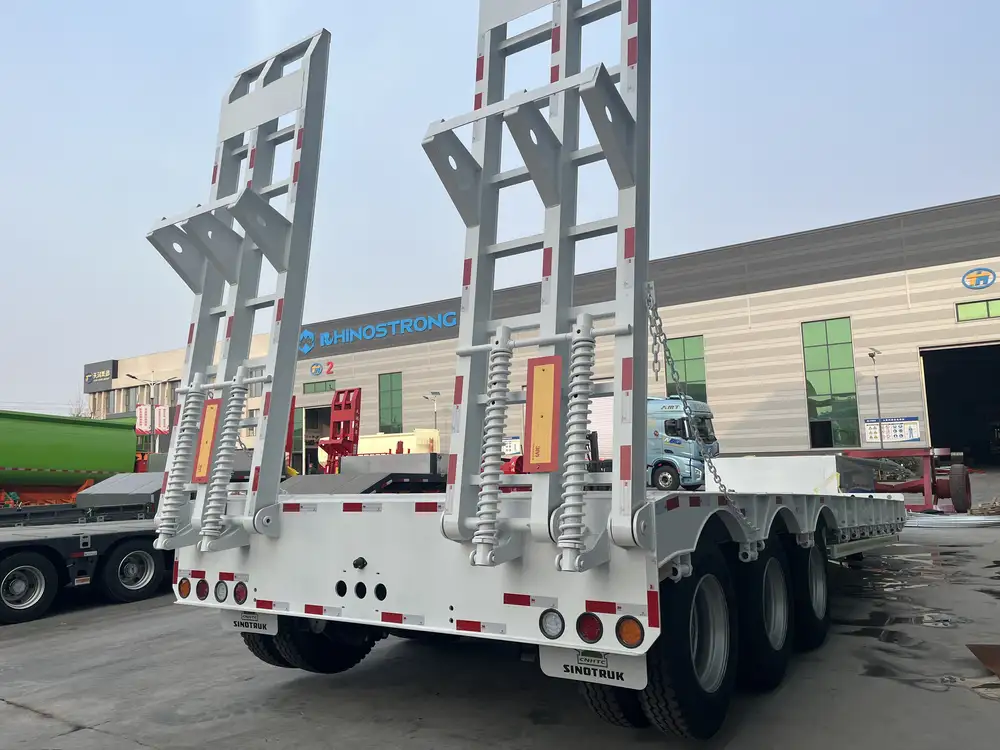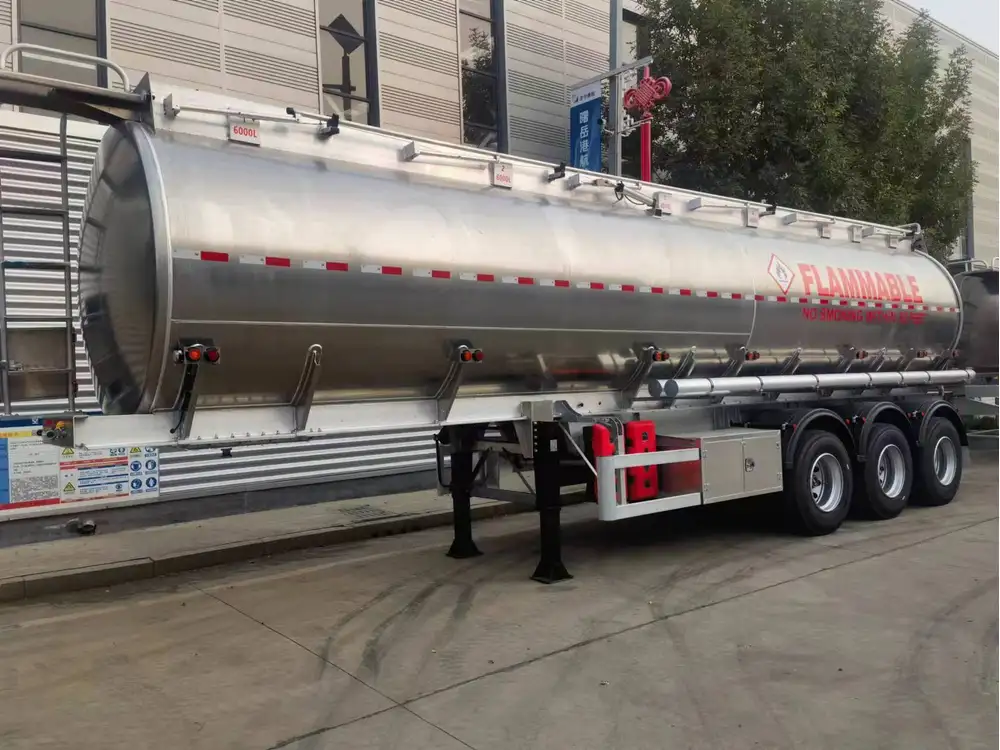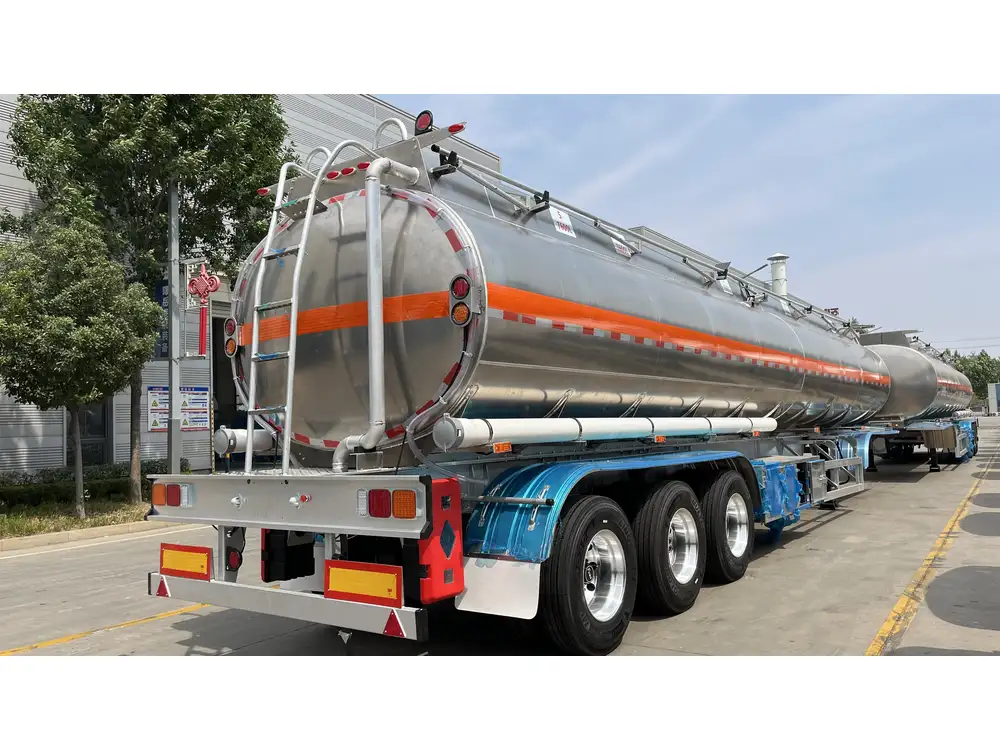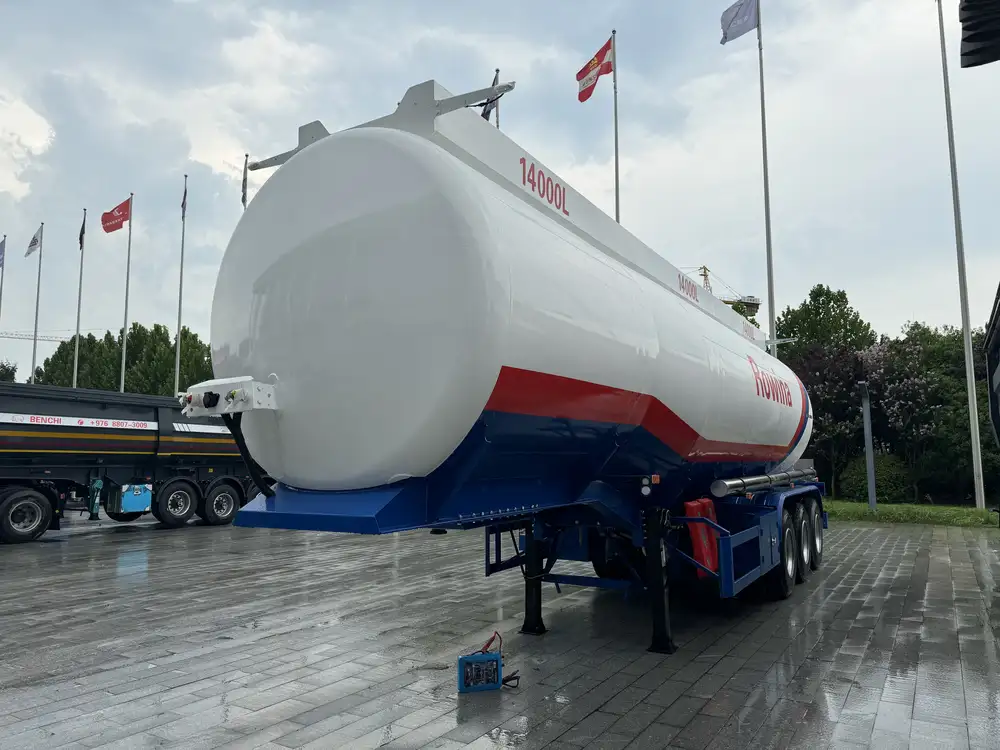When it comes to transporting liquid commodities, particularly milk, the design of the tanker trailer becomes paramount. Among the various engineering features that enhance performance, one crucial element to consider is the presence of baffles. This article explores the intricate design aspects of milk tanker trailers, focusing specifically on the use of baffles and their significance in ensuring safe and efficient transportation of dairy products.
What Are Baffles and Their Role in Tanker Trailers?
Baffles are internal structures within tanker trailers that are used to control the motion of the liquid being transported. In the context of milk tanker trailers, baffles serve several vital functions:
1. Minimizing Liquid Surge
- Definition: Liquid surge refers to the movement of liquid cargo during transit, which can lead to unbalanced loads and difficulty in handling the trailer.
- Function of Baffles: By interrupting the flow of the liquid in the tank, baffles help to minimize the wave effect and stabilize the liquid. This stability is critical when navigating turns, accelerating, or decelerating.

2. Ensuring Load Stability
- Prevention of Over-Turning: A tank trailer filled with liquid can have a shifting center of gravity, which might increase the risk of tipping. Baffles work to keep the liquid more contained and help maintain the truck’s equilibrium.
- Safety Standards Compliance: Manufacturers of milk tanker trailers must adhere to safety standards, and the inclusion of baffles is often part of these regulations.
3. Facilitating Effective Cleaning and Maintenance
- Design for Sanitation: In the dairy industry, cleanliness is non-negotiable. Baffles can help in the easy draining and cleaning of the tank, thus preventing residue build-up and contamination.
- Inspection and Quality Control: Baffle designs impact how easily operators can access different parts of the trailer for inspection and maintenance, ensuring that the trailer remains functional and safe through its life cycle.
Types of Baffles Commonly Used in Milk Tanker Trailers
Understanding the various types of baffles and their applications can provide insight into how they function in a milk tanker trailer.

1. Vertical Baffles
- Description: These baffles run vertically from the top to the bottom of the tank.
- Advantages: They are highly effective at reducing the movement of liquid and can significantly lower the wave action within the tank.
2. Horizontal Baffles
- Description: Horizontal baffles function by dividing the tank into compartments, which can decrease surge during rapid movements.
- Applications: Often used in larger trailers to create multiple compartments for transporting different grades or types of milk efficiently.
3. Corner Baffles
- Description: Specifically designed to be placed in the corners of the tank, these help in managing the cornering forces during turns.
- Performance: They work alongside other baffles to provide additional support and stability.

Advantages of Using Baffles in Milk Tanker Trailers
Milk tanker trailers equipped with baffles not only support operational efficiency but also enhance safety and performance in transport. Here are the key advantages:
1. Enhanced Safety
- Baffles improve the overall stability of the tanker, making it less likely to tip over during maneuvering.
2. Reduced Wear and Tear
- By minimizing liquid movement, baffles can help in reducing the strain on the tank walls, preventing premature wear and potential leaks.

3. Operational Efficiency
- Baffled tanks improve the driver’s control over the vehicle, allowing for smoother handling. This can potentially lead to reduced fuel consumption and wear on the truck.
4. Improved Product Quality
- Minimizing product agitation ensures that the milk maintains its quality. Excessive movement can lead to the introduction of air, which can deteriorate the milk’s freshness.
Factors Affecting the Design and Implementation of Baffles
While baffles are beneficial, their design and placement will depend on several factors. Here’s a look at some of these considerations:

1. Type of Liquid Being Transported
- Different liquids have different properties; for example, milk varies in density and viscosity. Tankers designed for thicker products may require specific baffling systems.
2. Size and Shape of the Tank
- Larger tanks may need a more complex baffling system to regulate the movement effectively. The shape also impacts how liquid moves and how baffles should be arranged.
3. Regulatory Standards
- Compliance with local and international regulations dictates specific baffling requirements that must be met for safety.

4. Operational Conditions
- Consideration of the routes driven (urban vs. rural) and driving behavior (aggressive vs. smooth) can affect how baffles should be designed and implemented.
Comparison of Tanker Trailer Designs
| Feature | Baffled Tanker Trailers | Non-Baffled Tanker Trailers |
|---|---|---|
| Liquid Surge Control | Excellent | Poor |
| Stability | High | Moderate |
| Cleaning Efficiency | Improved | Challenging |
| Safety Compliance | Meets Regulations | May Struggle |
Maintenance Tips for Baffled Milk Tanker Trailers
Routine maintenance is essential for the longevity and efficiency of milk tanker trailers. Below are some practical tips specific to those that have baffles:

1. Regular Inspection of Baffles
- Periodically check the integrity of the baffles for wear or damage, as tears or corrosion can compromise their effectiveness.
2. Cleaning Protocols
- Establish a cleaning schedule that addresses the baffles specifically. Ensure that there’s no residual buildup in compartments formed by baffles.
3. Load Distribution Checks
- Monitor that loads are evenly distributed to enhance the effectiveness of the baffles.

4. Professional Maintenance
- Engage qualified professionals for checks and repairs to ensure compliance with safety regulations.
Conclusion: The Importance of Baffles in Milk Tanker Trailers
Baffles play a critical role in the design and functionality of milk tanker trailers. From ensuring the stability of loads to enhancing product quality during transport, the presence of baffles is indispensable in contemporary trailer manufacturing. With proper design, maintenance, and oversight, these trailers can operate safely and efficiently, fulfilling the needs of modern dairy logistics.
As manufacturers continue to innovate and improve designs, it’s clear that the future of milk transport will rely heavily on these engineering marvels—baffles. By understanding their significance, stakeholders in the dairy supply chain can make informed choices that bolster safety, efficiency, and quality in their operations.



